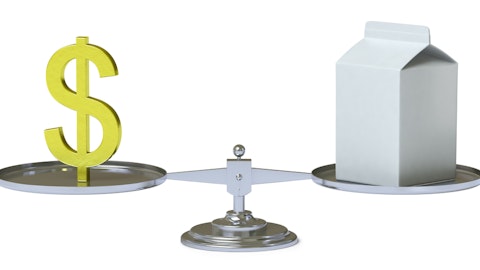What are the most expensive abstract paintings in the world?
I know that deep down inside you’re pretty certain you can churn out an ‘abstract’ painting. There’s a community out there who sees value in abstract work, and can tell apart your work (!) from the big guns. The 10 most expensive abstract paintings in the world will blow your mind. Abstract painting is more than just tracing lines and splatter paint without an apparent purpose. It’s about improvisation, spontaneity, changing techniques and breaking conventions.

Panom / Shutterstock.com
As some may not know, abstract art can also include music, dance, sculptures and even architecture. To make this list we considered exclusively paintings and searched for the most expensive ones ever sold, which is high enough that many would be tempted to steal them. Then they would also be part of our most expensive stolen paintings list.
10. False Start – $84. 6 Million
To begin our list of most expensive paintings, we have “False Start”, done by Jasper Johns. Sold at $84.6 million, this piece became in 2006 the most expensive painting by a living artist.
9. Orange, Red, Yellow – $87 Million
This canvas was done by Mark Rothko. Even though the painter, along with Willem De Kooning and Jackson Pollock was considered a major figure in the Abstract Expressionist movement, he wasn’t really fond of being categorized in that way, so he tended to reject the label.
8. Dora Maar au Chat – $95.2 Million
Pablo Picasso did this painting inspired by one of his lovers, Dora Maar. She outlived the painter by 24 years and 9 years after she died, “Dora Maar au Chat” was sold for $95.2 million, becoming one of the most expensive paintings ever sold.
7. Anna’s Light – $105.7 Million
“Anna’s Light” was done by Barnett Newman in 1968, just two years before he died and it was named after Barnett’s mother, Anna. This canvas is Newman’s largest, with 9 feet high and 20 feet long.
6. Nude, Green Leaves and Bust – $106.5 Million
“Nude, Green Leave and Bust”, is one of the many paintings in which Picasso represented his mistress Marie-Thérèse Walter, a relationship that had to be kept secret, not only because it was an affair but because Walter was only 17 when Picasso met her.
5. Woman III – $137.5 Million
At the middle of our list of the most expensive abstract paintings in the world, we have the piece done by Willem de Kooning, one of the most recognized painters of the Abstract Expressionist movement. “Woman III” is part of a series of six paintings and it was bought by hedge fund billionaire, Steven A. Cohen, who had also bought another De Kooning canvas: “Police Gazette” for $63.5 million just a month before.
4. No. 5 – 140 Million
Jackson Pollock, another member of the Abstract Expressionist movement, is the author of this piece. Like Rothko, he started to name his work with numbers. According to Pollock’s wife, he did this because numbers are neutral and end up forcing people to watch the canvas for what it really is.
3. Le Rêve – $155 Million
“Le Rêve” by Pablo Picasso was owned in 2006 by Steve Wynn, and he was planning to sell it to Steven Cohen for $139 million. But a day after the agreement, while he was showing the painting, Wynn accidentally damaged the canvas by putting his elbow through it. Finally, after thousands of dollars spent on repairs and battles with his insurance, he did sell the painting to Cohen in 2013, for $155 million.
2. Les Femmes d’Alger (Version “O”) – 179.4 Million
The painting by Pablo Picasso was sold this year in May to an anonymous buyer, and it became the most expensive piece ever sold at an auction.
1. No. 6 (Violet, Green and Red) – $186 Million
At the end of our 10 Most Expensive Abstract Paintings in the World list, we have, not surprisingly, another of Mark Rothko’s canvases, with a value of $186 million. As you’ve probably noticed by now, the painter preferred to number his creations or name them after the colors he used instead of giving them a title. This piece was bought at a private sale by Dmitry Rybolovlev. However, the painting is now subject to a legal dispute between Rybolovlev and the art dealer who sold it to him, since the collector accused Yves Bouvier of misleading him about the real value of No. 6.





